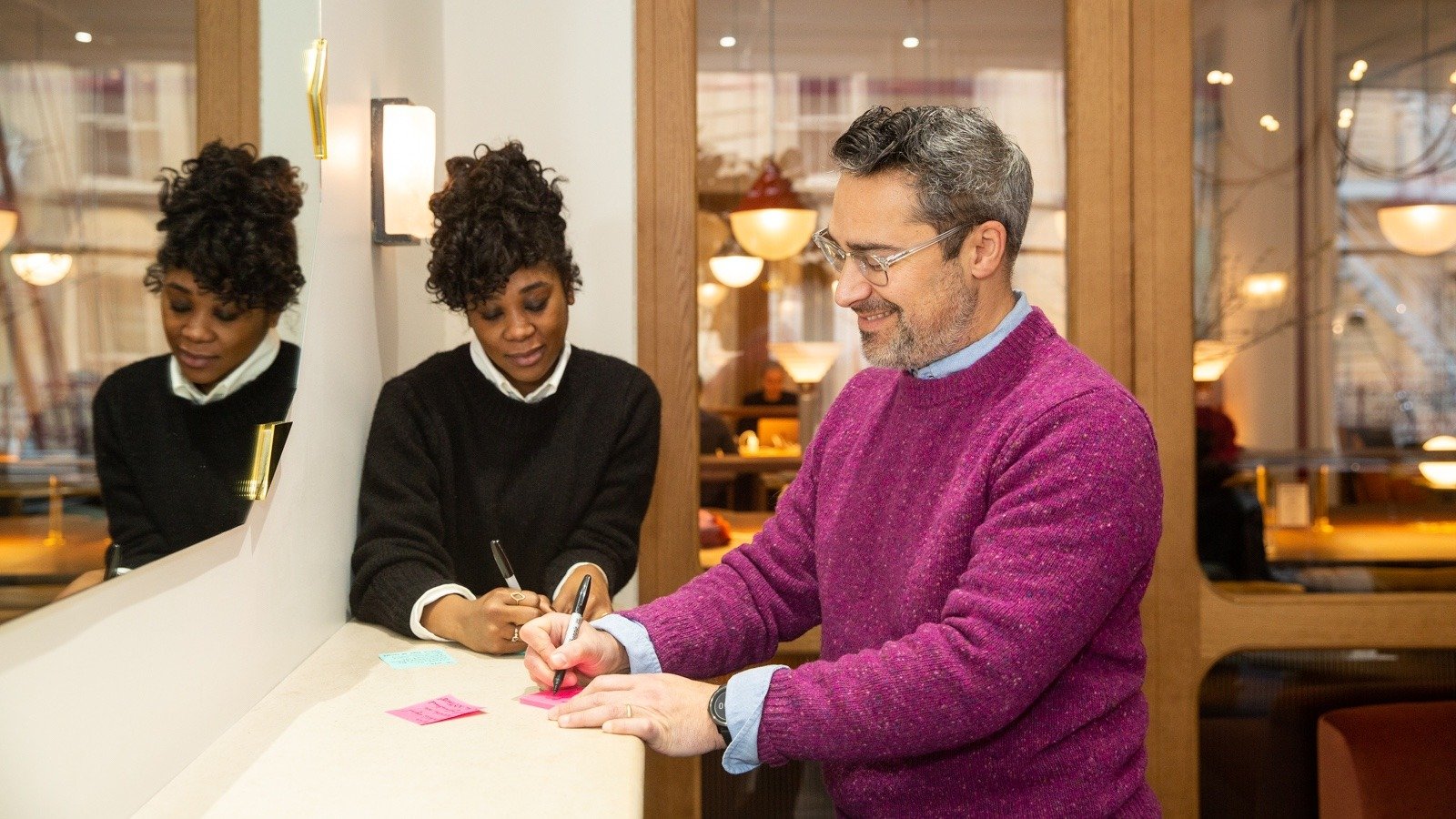Published December 21, 2022 | Updated June 21, 2024 | 4 minute read
In Summer 2022, August embarked on its first experiment with a shortened work week. At the end we held a retrospective to discuss what worked, what didn’t, and what we learned. This blog is the fourth installment in a 4-part series reflecting on our discoveries.
The 4-Day Week is a tough sell in American workplaces, despite its well-researched benefits and its growing appeal to job searchers.
One reason for this, as my pal Tirzah Enumah pointed out, is because the 4-day week challenges the outdated belief that working more = achieving more.
In today’s knowledge economy, this simply isn’t true anymore.
The truth is that the benefits of a shorter work week are only available if we consciously embrace doing less.
A shorter week forces prioritization, which is good for business AND for employees.
At August, rather than trying to cram 5 days of work into 4 days’ time, we accepted from the get-go that something would have to give – and we we chose our trade-offs up front.
For our Summer Fridays experiment, we consciously chose to deprioritize team building. This was a hard choice, no question. We value our team culture deeply, and it was a real bummer to miss out on dedicated team time all summer.
But ultimately, it was the right trade-off for us. Here’s why it worked, and our four key takeaways for designing your own conscious trade-offs.
1. Make your trade-offs temporary.
We knew our Summer Fridays would only last 12 weeks. My pals and I wouldn't dream of sacrificing team connection in the long run. But for the short run it was a good trade-off that allowed us to maintain the same level of client services while cutting our work hours by 20%.
In the future, we might choose to temporarily deprioritize experimentation with new offerings or non-essential systems improvements. We might even temporarily convert our internal meetings related to client work to an asynchronous format.
Any one of these trade-offs probably wouldn’t work long term. But with enough short-term options in rotation, we can work fewer hours and still keep our organization thriving.
The Takeaway: Give your trade-offs an end date, whether it’s the month, the quarter or the 6-month mark. Rotate your priorities throughout the year, and you won’t have to suffer any one pain point for long.
2. Focus on the wins.
Our Summer Fridays experiment yielded some surprisingly supportive business data. As Mike Arauz reported, “Every aspect of our business performance either sustained or improved over the course of Summer Fridays – and sales did not suffer at all!”
Not only that, but most of our pals reported enjoying more relaxed time with family and friends in the summer months. That’s a huge upside to the diminished team time!
When our trade-offs inflamed certain pain points, our measurable wins helped keep us going. Between our real-time business metrics and our concluding retrospective, we decided that while there were certainly downsides, the upsides were worth it.
The Takeaway: When you make a conscious trade-off, be sure to measure the upsides of what it gets you. Celebrate the wins even as you acknowledge the sacrifices. This will help you maintain a balanced perspective, and objectively assess whether the trade-off was a net win or loss.
3. Find creative ways to build your culture.
The truncated work time of Summer Fridays organically streamlined and focused our internal collaborations. So while we couldn’t spend as much “official” time on team-building, our connections with each other through active collaboration became stronger and deeper.
This took the form of more laughter during meetings, deeper focus in collaborative sessions, and clearer communication across the board. We found new ways to blend efficiency with humanity, while preventing the resentment and burnout that almost certainly would’ve accompanied a “pack it all in” approach.
The Takeaway: Culture-building is operational and structural, as well as social. If you have to temporarily trade off the social element, get creative about how to make the operational and structural elements more conscious.
For more on culture-building, check out Keara Mascareñaz’s reflection on the role of healthy boundaries in the 4-day work week!
4. Let the learnings of one trade-off inform the next.
As I mentioned above, our team retrospective was crucial to the overall success of our Summer Fridays experiment. Without setting aside formal time for reflection and feedback, we never would’ve known if our trade-off was worth it.
Our retrospective also yielded a working list of ideas for how to make the trade-off better next time. These include:
- A “travel to a pal” fund, to support self-booked in-person work sessions with groups of 2-3 pals
- A preplanned “together week,” in which all pals travel to work together for 1 week of the summer
- A virtual happy hour or game night, so we can unwind together outside of our focused work days
The Takeaway: If you make a trade-off, hold a formal retrospective to gather data and feedback, compare pros and cons, and make adjustments for next time.
Summary
The 4-day work week isn’t perfect. But its benefits can outweigh the standard 5-day week by quite a bit, if you consciously choose your trade-offs ahead of time.
A trade-off doesn’t have to be perfect in order to be right. And just because you make a certain trade-off now doesn’t mean you have to make it forever.
When you are working to strategize your own 4-day work week, try to make the difficult decisions up front. Don’t wait for things to start falling apart. Prevention is far more efficient than repair, and in a 4-day week you don’t have any time to spare for putting out fires.
When you make trade-offs proactively and intentionally, you’ll empower yourself and your team to maximize your learning, optimize your culture, and grow your business. At the end of the day, that’s what the 4-day week is all about.


.jpg)






